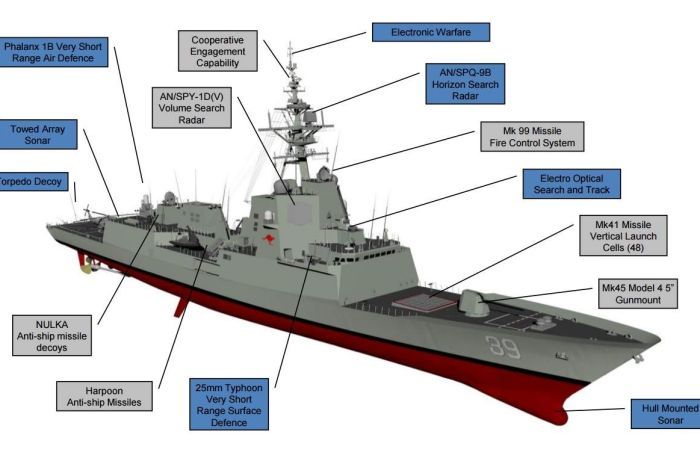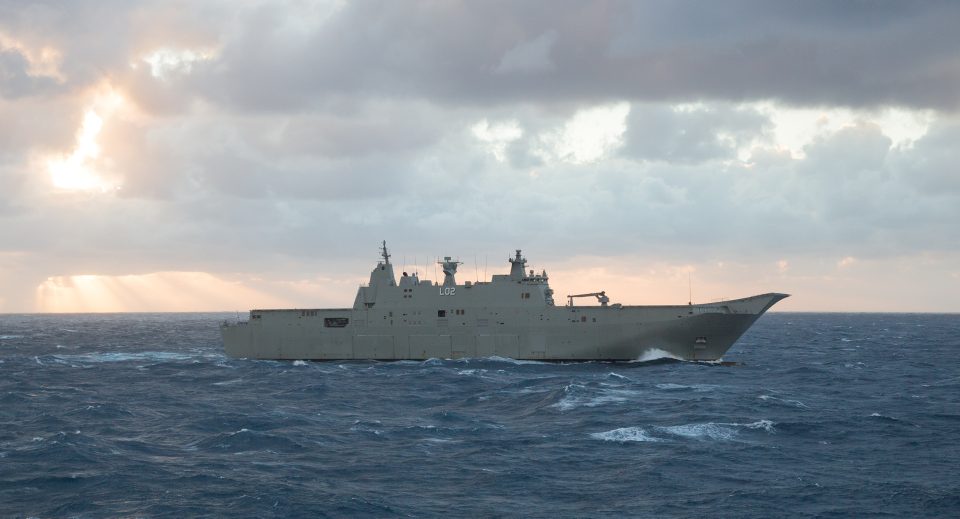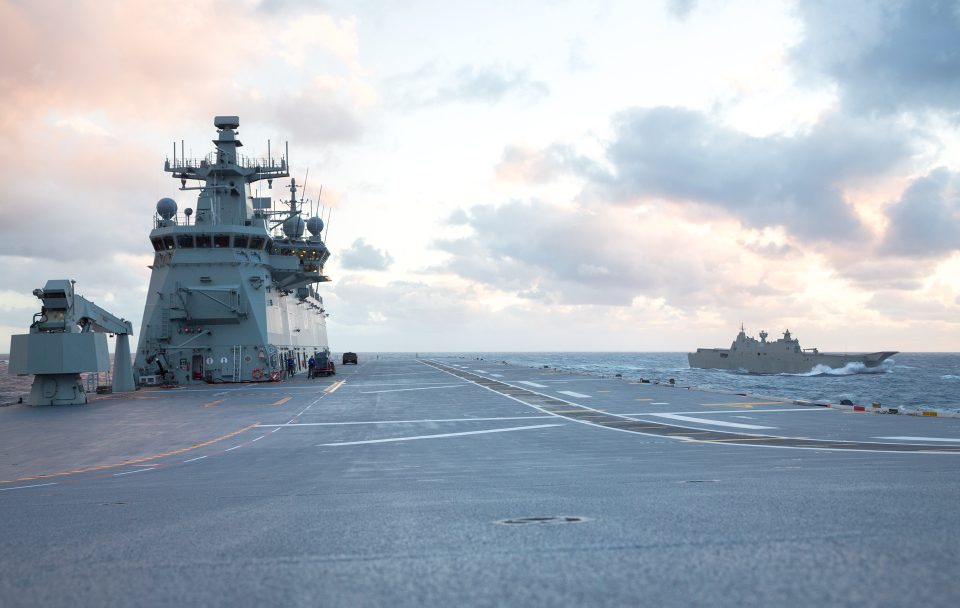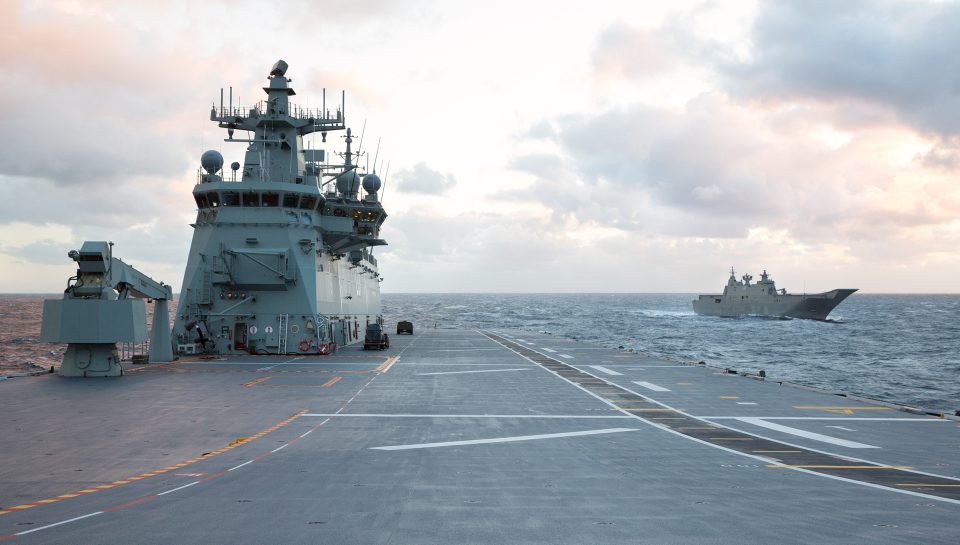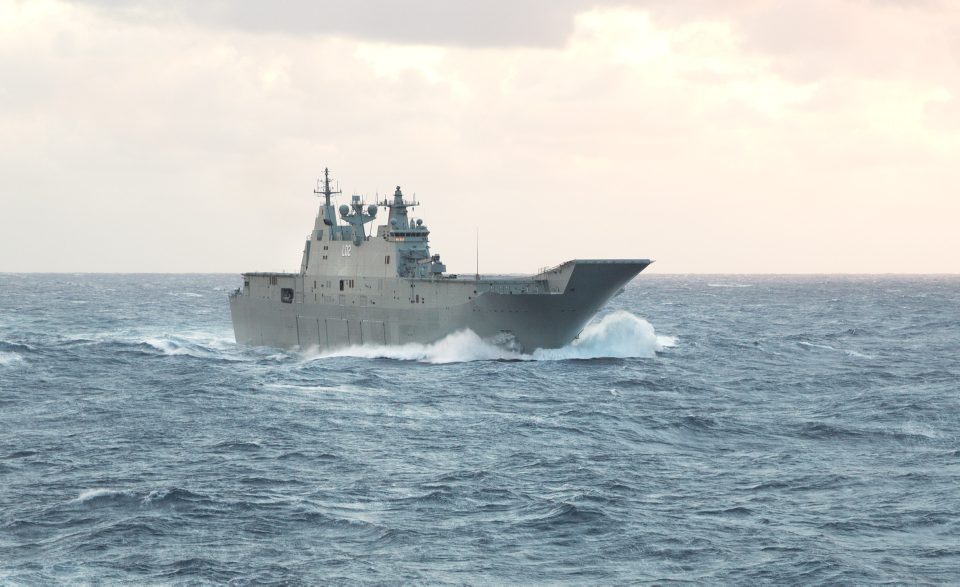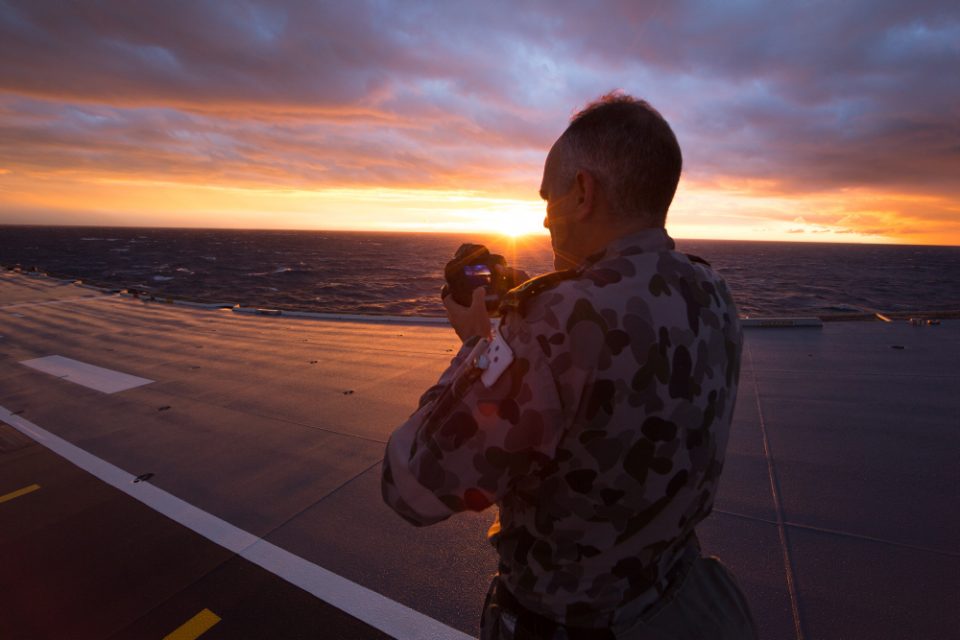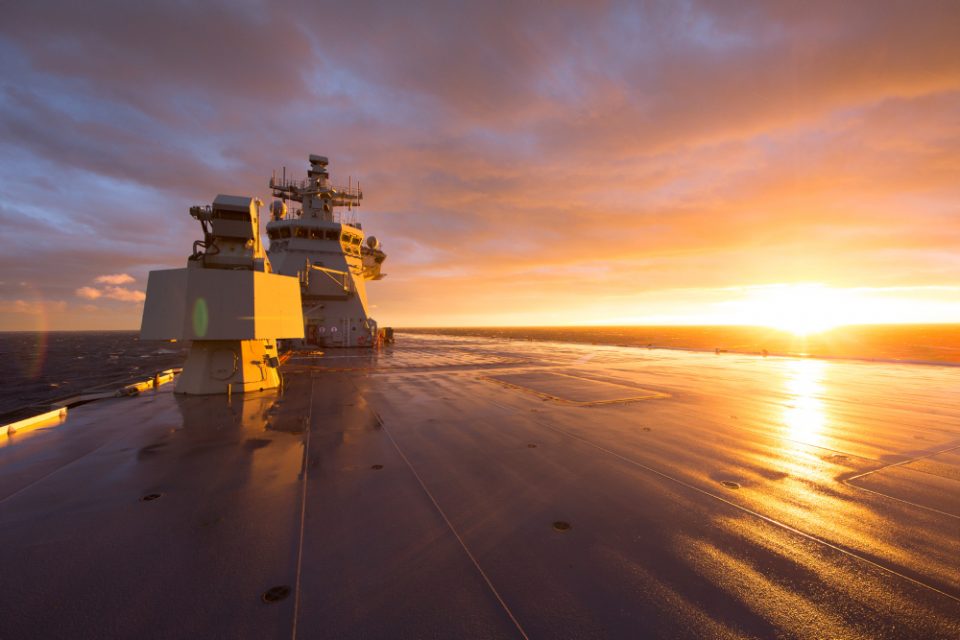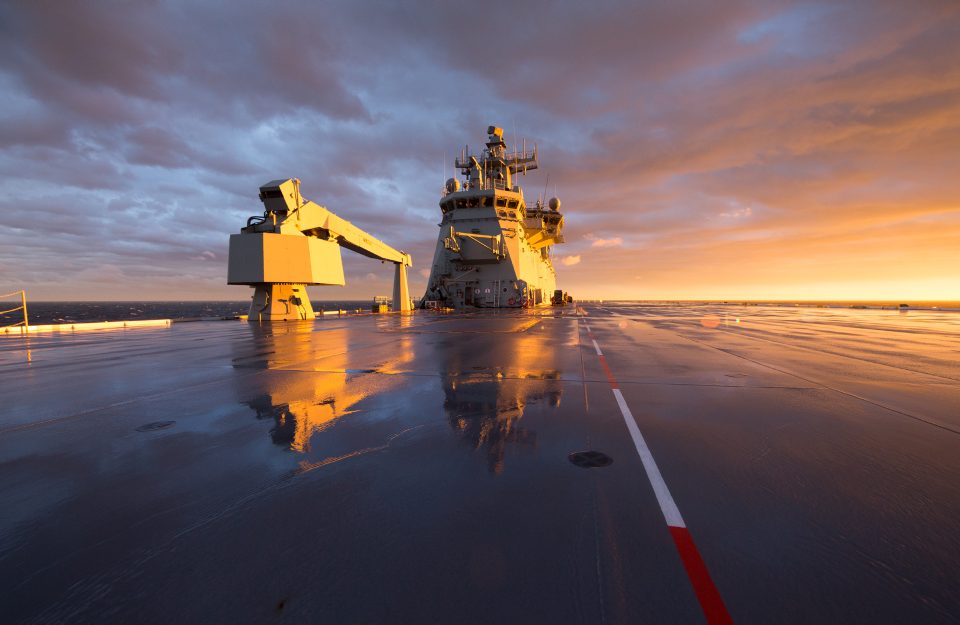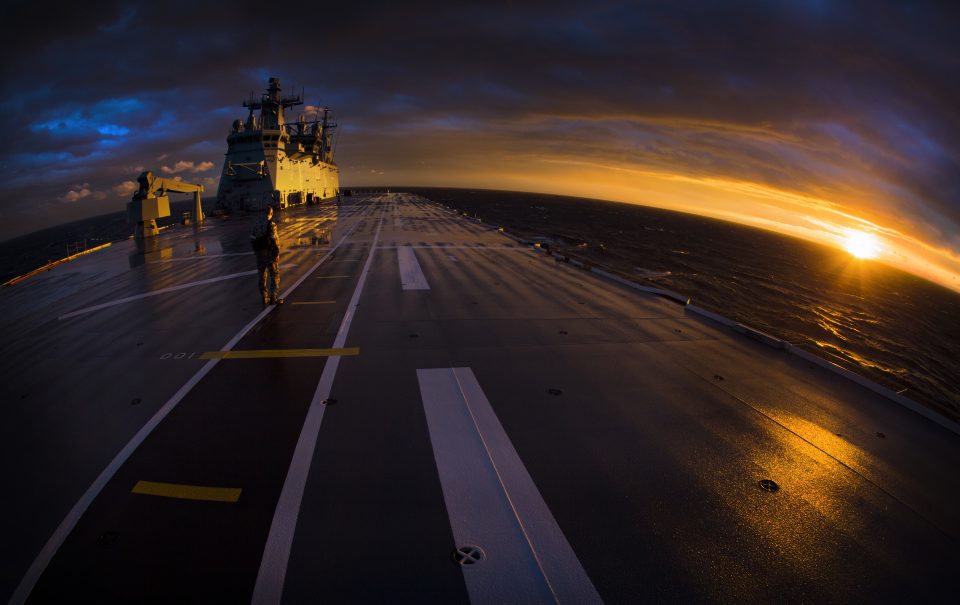8/2/17
Saxon Warrior is an exercise designed to develop theater-specific
combat skills, as well as enhance cooperation between U.S. and U.K. forces and governmental agencies.
Led by the Royal Navy’s Flag Officer Sea Training (FOST), Saxon Warrior ’17 presents a myriad of challenges to the multinational and multi-platform force by creating a diverse and unpredictable war environment based on fictional geo-political and military scenarios.
“Saxon Warrior allows both U.S. and U.K. naval forces a chance to hone our interoperability skills,” said Rear Adm. Kenneth Whitesell, commander, Carrier Strike Group 2.
“Particularly important is the alignment of U.S. carrier strike groups and the U.K. carrier strike group.
“This unique opportunity affords the spectrum of warfighting for both strike group staffs, strengthening our military understanding and capability.”
The exercise presents an opportunity to face a variety of scenarios that change day to day, providing a tactical contrast that builds upon the in-depth, extended timeline scenario training that began during GHWBCSG’s composite training unit exercise (COMPTUEX).
The U.K. carrier strike group commander is embarked with their team and is excited to begin an interoperability exercise with our long-standing NATO partners.
”Building on a long history of strong U.S./U.K. relations, Saxon Warrior ’17 will demonstrate the key role that the U.K., as a leading NATO nation, plays in regional security,” said U.K. Carrier Strike Group Commander Cdre Andrew Betton OBE, Royal Navy.
“The exercise will focus on our ability to train together using advanced warfighting capabilities and contribute toward the generation of the U.K. Carrier Strike Group.”
Elements from the George H.W. Bush CSG working in concert with the United Kingdom’s CSG and maritime units from Germany, Norway and Sweden will sharpen the skills needed for increased interoperability, and proficiency in conducting vital maritime operations around the world.
Article by Mass Communication Specialist 3rd Class Mario Coto, USS George H.W. Bush Public Affairs
And from a Royal Navy article published on 8/1/17:
Exercise Saxon Warrior 17 is now in full swing. A giant US aircraft carrier the USS George HW Bush is somewhere off the coast of Scotland and a number of European partners are also taking part.
The exercise in broad terms involves a notional conflict between neighbouring countries, one of which is Pastonia, supported by a multinational naval force, Carrier Strike Group (CSG) 315.01.
The CSG includes Type 23 frigates HMS Westminster and Iron Duke, Norwegian frigate Helge Ingstad, United States ships USS Philippine Sea and Donald Cook, and the supercarrier George Bush (GHWB).
Opposing this Strike Group is Task Force 606 of the Dragonian Navy. They are a mere three ships including US destroyer USS Truxton and cruiser Leyte Gulf. They are led by the Norwegian frigate Otto Sverdrup.
There are also a large number of other elements to the exercise including supporting aircraft providing air raids, plus 29 Commando and Swedish tactical air controllers providing forward observation to ships and aircraft dropping ordnance onto Cape Wrath.
The air participants include Navy and RAF Hawk aircraft, RAF Typhoons, a large number of United States carrier borne aircraft which are mostly F18 Super Hornets, as well as British, American and German surveillance and refuelling aircraft.
Also participating are a Royal Marines troop who have been training to conduct Joint Personnel Recovery operations from 42 Commando.
All these elements are co-ordinated by the Joint Tactical Exercise Planning Staff (JTEPS) working from Faslane, north of Glasgow. On-board GHWB are staff from the UK Carrier Strike Group brushing up their skills for the arrival of aircraft on-board our own supercarrier HMS Queen Elizabeth.
Finally, this article by Naval Today published on 8/11/17, described the wrap up of the exercise:
The joint US-UK exercise Saxon Warrior, held in waters off Scotland, concluded on August 10 after ten days of drills.
Surface combatants from the UK, US and Norway joined the US Navy aircraft carrier USS George H.W. Bush as the Royal Navy is preparing to revive its carrier strike capability.
At one point of the exercise, the international group was joined by the Royal Navy’s new aircraft carrier Queen Elizabeth for a photo opportunityand a group sail, just days ahead of her commissioning in Portsmouth.
As the Royal Navy explained, the exercise in broad terms involved a notional conflict between neighboring countries, one of which is Pastonia, supported by a multinational naval force, Carrier Strike Group (CSG) 315.01.
The CSG included Type 23 frigates HMS Westminster and Iron Duke, Norwegian frigate Helge Ingstad, United States ships USS Philippine Sea and Donald Cook, and the supercarrier George Bush (GHWB). Opposing this strike group was Task Force 606 of the Dragonian Navy composed of US destroyer USS Truxton and cruiser Leyte Gulf, led by the Norwegian frigate Otto Sverdrup.
There were also a large number of other elements to the exercise including supporting aircraft providing air raids, plus 29 Commando and Swedish tactical air controllers providing forward observation to ships and aircraft dropping ordnance onto Cape Wrath.
The air participants included Navy and RAF Hawk aircraft, RAF Typhoons, a large number of United States carrier borne aircraft which are mostly F18 Super Hornets, as well as British, American and German surveillance and refueling aircraft.
On-board GHWB were staff from the UK Carrier Strike Group brushing up their skills for the arrival of aircraft on-board our own supercarrier HMS Queen Elizabeth.
“Exercise Saxon Warrior is an incredibly important and exciting step in the regeneration of the UK’s Carrier Strike capability,” said JTEPS commander Captain Andrew Stacey RN.
“The generosity of the United States Navy in the provision of not only a Carrier Strike Group but also mentoring and exercise enablers has been crucial in ensuring that Royal Navy is on the right path to stand shoulder to shoulder with the USN with a shared Carrier Strike heritage.”
US-UK exercise Saxon Warrior concludes


